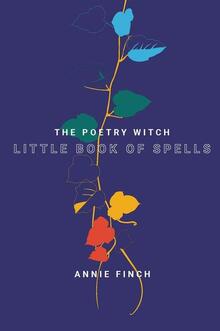 Samhain I feel the nights stretching away thousands long behind the days till they reach the darkness where all of me is ancestor. Annie Finch in The Poetry Witch Little Book of Spells ***
Today is Samhain, the Celtic festival marking the division of the year between the lighter half and the darker, when the division between this world and the next is at its thinnest, allowing spirits to pass through. In The Lady of the Cliffs it is on Samhain, in The Sorrows Cove, that Megge discovers the ancestor she once was and must now decide which path she will take through this life and into eternity.
1 Comment
The Lady of the Cliffs, Book Two of the Bury Down Chronicles (or "Megge Two", to the readers who love her) picks up moments after Book One ends and follows Megge as she begins to keep three promises: one to Claris, one to Brighida, and one to The Blacksmith, Michael Gough.
As anyone who has read Megge of Bury Down will attest, the story opens slowly, allowing the reader to meander through Megge's world and see it through her eyes as she gets to know it and as she wrangles with concepts and decisions well beyond her ken. This slow build was intentional as this is the opening to a long, complex series, and I, for one, dislike sequels that spend chapters rebuilding the storyworld and redefining every character. For those who savored Megge of Bury Down, your investment in time and attention will have paid off as you step back into Megge's world in The Lady of the Cliffs. Coming on Samhain, November 1, 2020.  I just listened to an audiobook by Heather Morris, based on the true story of Lale Sokolov's internment in Auschwitz. This was not a typical biography or historical fiction novel. It was a beautiful story crafted through interviews with Mr. Sokolov, at his request, just prior to his death, and written as a novel. Morris concludes the work with a description of her interaction with Mr. Sokolov and a brief section written by Sokolov's son, who provides the reader with information only he would know: how the years of torture and the struggle to survive Auschwitz and Birkenau forever united his parents and influenced their everyday life. The work was illuminating, and the audiobook beautifully performed, though so much of the story was devastating. But what struck me most forcefully was that Mr. Sokolov so needed to tell his story that he sought out Morris, interviewed her, and then engaged her to write it. Over a period of three years, Heather Morris recorded Sokolov's words, researched his story, interviewed his contacts, and wrote The Tatooist of Auschwitz, a novel that documents both objectively and intimately the torment and the resignation of a man whose years in an infamous prison taught him that survival meant both acquiescence and quiet rebellion. I feel certain that Morris's work brought Sokolov and his family the peace and comfort only knowledge and revelation can confer. Morris's novel got me thinking about the many skills biographers bring to the task of memorializing a life and about the many ways a story can be told, and I thought of the valuable work author Richard Squires is now doing for people who want their story, or the story of a loved one, to be told. Squires created LifeStory to help people write their own life stories—in their own words—and create a beautiful book they can pass on. When I visited the LifeStory website and saw all the lovely images and read portions of the stories people entrusted to Squires, I knew he had found work that must be tremendously satisfying, work he carries out with skill, patience, and insight. All writers write the stories that come to them, whether memoir, fiction, or biography. But it is a generous writer who allows others to tell their own stories, in their own words, and then compiles, organizes, and edits hundreds of pieces to produce a vivid portrait of that life. Says Sara H., “As I read, I could literally hear my father speaking to me—they were his words in his voice.” There is no finer praise for a writer/editor and no higher recommendation for a collaborator/memoirist. I wish my parents could tell their own stories. But it occurs to me that my four siblings and I have tons of stories about them! So many, Richard Squires would have no problem writing about the lives of two people who served in the US Army in WWII and then married and raised a family: one a Steelworker who would become a union leader and the other a secretary who would become a district justice. Their grandchildren and great-grandchildren would no doubt love to hear their stories and pass them on. For a real treat, even if you're not yet ready to write your own memoir, check out LifeStory. It's a truly lovely website. Southern fiction, local fiction, historical fiction: Kim Michele Richardson's body of work shines. I was introduced to the Kentucky native's work a few years ago when her 2016 release, GodPretty in the Tobacco Field, appeared on the list of books to be reviewed by the Historical Novels Society.
I requested it and was bowled over by Richardson's vivid storytelling and skilled use of local dialect. She portrays with respect and dignity the families of Kentucky's Appalachian hills, creating characters RubyLyn and Gunnar Royal, whose lives and aspirations transcend location, economics, and time. Author Sara Gruen says of GodPretty, "Beauty and sweetness weave a diaphanous fabric against the stark backdrop of poverty and cruelty." In 2017, Richardson released the lauded novel The Sisters of Glass Ferry, an Editor's Choice in Historical Novels Review. Of Richardson's work in Sisters, the Southern Literary Review says, "Her evocation of the sensory world is astonishing, as is her handling of the intangible aspects of the environment: values, prejudices, and aspirations. She conjures a world that seems at once vividly present and broodingly haunted." The widely anticipated The Book Woman of Troublesome Creek is slated for release in 2019. You can learn more about the author here: If you enjoy audiobooks, get ready to listen to a wonderful storyteller!
Award-winning narrator, London native Jan Cramer, has narrated and produced a lovely audio version of Megge of Bury Down. Have a listen! Bury Down [hillfort], Lanreath, is believed to have been originally constructed as a Neolithic causewayed enclosure, which was then reused as an Iron Age hillfort. Photo and text from Cornwall and Isles of Scilly Historic Environment Record One of the most fascinating things about putting out a book is seeing the images that have taken shape in the mind's eye of the artist designing the cover.
April Martinez read the book and designed the beautiful cover for Megge of Bury Down. I gave no input, saw no early renderings, and was treated to the final cover the day the book was released. And I can only say how stunned I was that she captured so many iconic images from the story in one beautiful portrait. Now April's at work on the book trailer, and I'm standing back and waiting for her eye and her hand to bring to the screen the sounds and images of Bury Down. I'll share it with you as soon as she says, "Done!" ~ Rebecca Tomorrow night, January 31, we will see a blue moon that's closer than it's been in 152 years. A supermoon tinged with red, this "blood" moon will bring with it the feast of Imbolc and the story of a family of women healers and seers whose lives and work I hope you'll want to follow through The Bury Down Chronicles.
MEGGE OF BURY DOWN has been in the works and on my mind for seven years now, and the book is coming out on Imbolc, February 1st. That evening, a small gathering of my family and friends will have a celebratory supper and raise a glass of mead to the woman who brought the story to life on the page: Elizabeth Burton, publisher, at Zumaya Publications. Liz has worked tirelessly, always with a wonderful sense of humor, to edit the book and bring it out on this special day. Thanks, Liz. Here's to you! January 21: Day One of Rowan Moon The Rowan Moon is associated with the goddess Brighid, the Celtic goddess of hearth and home. Honored on Imbolc on February 1, Brighid is a fire goddess who offers protection to mothers and families, as well as watching over the hearth-fires. Known by the Celts as Luis (pronounced loush). The Rowan is associated with astral travel, personal power, and success. A charm carved into a bit of a Rowan twig is said to protect the wearer from harm. The Norsemen were known to have used Rowan branches as rune staves of protection. In some countries, Rowan is planted in graveyards to prevent the dead from lingering around too long. Credit and thanks for this lovely image and description go to Leila Raven at Temple Illuminatus. www.templeilluminatus.com/events/celtic-tree-month-rowan-moon  Photo credit: Angela Jayne Latham www.celticmystery.co.uk/ Mid-January to mid-February is the Celtic month of the Rowan moon. In 2018, Rowan Moon will feature the second full moon of the month, a blue moon. Occurring on the last day of January, the blue moon will also be a super moon; and on that night there will be a full lunar eclipse. The following day, February 1, the pagan feast of Imbolc, is the halfway point between the winter solstice and the spring equinox. Heralded by Celtic cultures as the beginning of spring, it is also Saint Brigid's day. Appropriately, February 1st is also the day Megge of Bury Down will be published. If you've read the Prologue and Chapter One of the book, you'll have glimpsed why this date is auspicious. While all these elements--the Rowan (or Quickening) moon, the rowan tree, the name Brighida--came together naturally as I wrote, it is no surprise to me to learn that they seem to possess celestial synergy. For more on the mystical properties of the rowan, see the wonderful compilation of writings at thegoddesstree.com/trees/Rowan.htm and the very informative post at underafullmoon13fullmoons.blogspot.com/2011/03/rowan-moon To all, a wonderful new year and a magical Rowan Moon. Rebecca |
Notes on writing, editing, authors, and booksArchives
November 2021
Categories
All
|





 RSS Feed
RSS Feed